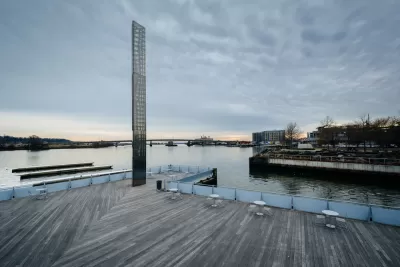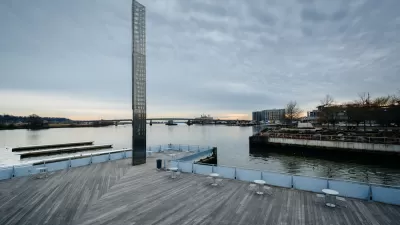A tremendous open space and recreation addition could be on the horizon for residents of Washington, D.C., but there's still work to do in cleaning the Potomac and Anacostia rivers.

"The reasons why you can’t safely or legally swim in the District’s rivers could be resolved within the next several years — a concrete milestone for clean rivers which until recently seemed difficult to envision," reports Mitch Wander.
Wander provides more details of the improving water quality of the Potomac River and the Anacostia River:
The Potomac Conservancy graded the Potomac a “B” in 2018, rising from a D- in 2007. The Anacostia Watershed Society rated the Anacostia a D- in 2018, the river’s first passing grade, with the ability to swim in the Anacostia by 2025 a stated goal. Both organizations, Rock Creek Conservancy, and their volunteers conduct extensive hands-on activities to improve our rivers.
According to Wander, the improved condition of the rivers are visible everywhere from nesting bald eagles to reduced trash and nitrogen to healthier fish. The article goes into detail about the benchmarks that will be necessary to achieve to clean the rivers enough for recreational swimming.
Planetizen also picked up news of D.C. Water's Clean River project, and the progress it's made in cleaning the Anacostia River, in July.
FULL STORY: DC’s rivers could be swimmable in the next several years

Study: Maui’s Plan to Convert Vacation Rentals to Long-Term Housing Could Cause Nearly $1 Billion Economic Loss
The plan would reduce visitor accommodation by 25,% resulting in 1,900 jobs lost.

North Texas Transit Leaders Tout Benefits of TOD for Growing Region
At a summit focused on transit-oriented development, policymakers discussed how North Texas’ expanded light rail system can serve as a tool for economic growth.

Why Should We Subsidize Public Transportation?
Many public transit agencies face financial stress due to rising costs, declining fare revenue, and declining subsidies. Transit advocates must provide a strong business case for increasing public transit funding.

How to Make US Trains Faster
Changes to boarding platforms and a switch to electric trains could improve U.S. passenger rail service without the added cost of high-speed rail.

Columbia’s Revitalized ‘Loop’ Is a Hub for Local Entrepreneurs
A focus on small businesses is helping a commercial corridor in Columbia, Missouri thrive.

Invasive Insect Threatens Minnesota’s Ash Forests
The Emerald Ash Borer is a rapidly spreading invasive pest threatening Minnesota’s ash trees, and homeowners are encouraged to plant diverse replacement species, avoid moving ash firewood, and monitor for signs of infestation.
Urban Design for Planners 1: Software Tools
This six-course series explores essential urban design concepts using open source software and equips planners with the tools they need to participate fully in the urban design process.
Planning for Universal Design
Learn the tools for implementing Universal Design in planning regulations.
City of Santa Clarita
Ascent Environmental
Institute for Housing and Urban Development Studies (IHS)
City of Grandview
Harvard GSD Executive Education
Toledo-Lucas County Plan Commissions
Salt Lake City
NYU Wagner Graduate School of Public Service





























